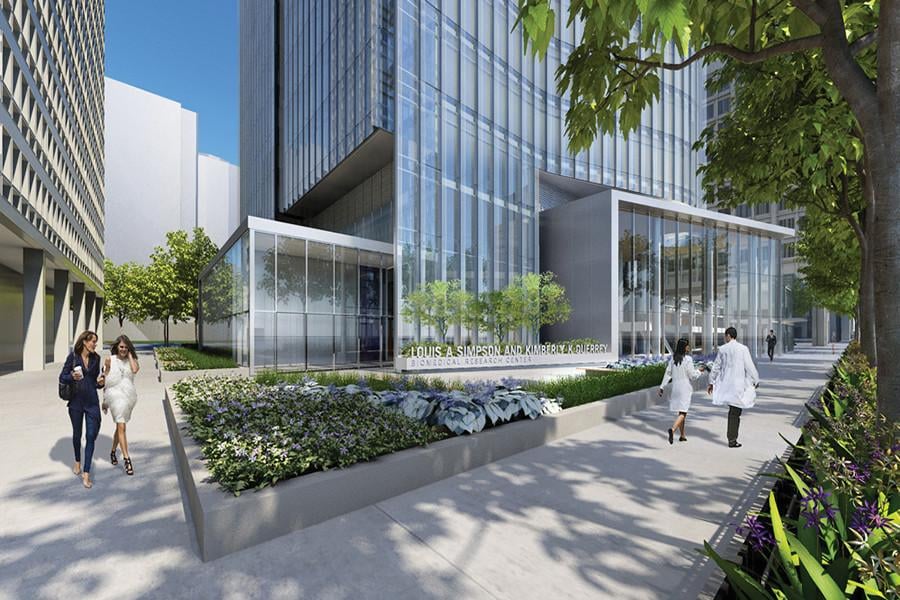NU research funding reaches new high of $620 million
NU is building the Louis A. Simpson and Kimberly K. Querrey Biomedical Research Center in the Chicago Campus with the aim of creating more research spaces for faculty, said Eric Neilson, vice president for medical affairs at the Feinberg School of Medicine. Feinberg is set to receive about $400 million out of the $620 million of Northwestern’s sponsored research funding.
November 13, 2015
This year, Northwestern’s sponsored research funding reached an all-time total of $620 million, representing a 4 percent increase from last year and a 63 percent increase in the past nine years alone.
Approximately 3,400 research proposals were written during the past fiscal year and totaled $2.5 billion, NU’s vice president for research Jay Walsh said.
“The faculty submitting these proposals … they’re submitting them into a competitive pool,” Walsh said. “Particularly for the government funding, these funds are peer reviewed. (Peer review panels) review 100 different proposals of which typically only something of the order of 10 get funded.”
Eric Neilson, vice president for medical affairs at the Feinberg School of Medicine, said the $620 million figure represents a culmination of what is predominantly grant awards that NU faculty have been awarded for projects they are pursuing.
“It is given to Northwestern on behalf of the faculty,” Neilson said. “Northwestern is required to manage the grant. We have to follow many technical rules of how the money is used or not used — we have very elaborate research services.”
Peter Civetta, the director of the Office of Undergraduate Research, said these grants are used after faculty come to NU and establish their laboratories.
“Northwestern pays for faculty to set up laboratories,” Civetta said. “Then, there is a responsibility to get external funding.”
Although funding for the University collectively totals $620 million, about $400 million is concentrated at Feinberg because most of the research that takes place at NU engages what Neilson calls “broad areas of interest” in the medical school. None of this funding goes to undergraduate research grants.
“We have some very big grants in the area of cardiovascular disease, neuroscience, cancer, preventive medicine, epidemiology,” Neilson said. “There are a large number of grants to understand healthcare, so we try to have a large variety (of research projects).”
The funding comes from federal agencies and other foundations, including the National Institutes of Health, whose contributions, Walsh said, made up approximately 50 percent of the total funding pool.
Since the funding is predominantly in the form of grants, which require faculty members to compete against other research projects from similar disciplines, Neilson said NU, as a research university, has been “paying more attention to recruiting exceptional faculty in research.”
Neilson said creating an educational environment in which the importance of research is stressed promotes a positive and different learning space for students.
“Research makes the university more interesting to its students,” he said. “It creates an environment of curiosity, commitment to large ideas.”
Walsh agreed, noting the two-fold mission with which the University approaches its faculty hires.
“We hire faculty who are very interested in doing two things: teach in classrooms and discover new knowledge,” Walsh said. “We bring in excellent talent and that is the key in seeing the increase in funding we have.”
As a result, NU is seeking to expand, both in terms of funding and physical space.
“We think (Feinberg’s) research enterprise should be up to $620 million a year and the whole university should be $1 billion,” said Neilson. “By making sure we have good resources in place, we can recruit new faculty who are accomplished … and (we) have been fortunate in recent years to attract faculty who are quite attractive.”
With this in mind, NU has begun construction on the Louis A. Simpson and Kimberly K. Querrey Biomedical Research Center on the school’s Chicago campus, among other projects, to create more space for more faculty members.
“We’ve run out of space to expand our faculty,” Neilson said. “We need to think about the other kinds of activities … that will allow us to make additional contributions to this important activity.”
Email: [email protected]


